Don’t forget to look for and pay attention to the little things as you compose your photographs. The little things can make a dull image interesting, a good image great, or just provide some additional visual interest in your photographs. These little things can be full-fledged compositional elements that you build the shot around, or they can just be slight bits of visual joy that are bonus treats for the eyes. The little things can be features in the landscape or atmospheric conditions. They can be pops of color, shapes, or interesting textures.
When I’m on location scanning for possible compositions, the first thing I’m focused on is the main subject or reason for a photograph. It could be an obvious subject, or something more subtle to be the main focus of the image. Once I’ve identified the main focal point of the subject, the next thing I do is typically look at the other elements that might be present in my composition, evaluating whether they add or detract from the subject or story. Inside of this process, I am always scanning for the little things that could add some additional visual interest or enhance the photograph in some way. Oftentimes, it’s these little things that are the deciding factor for where I choose to set up my tripod and compose the photo of my main subject.
I just returned from the Oregon Coast, leading a workshop there, and received a great reminder how the little things can add some amazing interest to a photograph. In fact, the coast is a fantastic place to incorporate the little things as there are rocks on the beach, shapes of the waves, or unique environmental conditions…all in one general location. Here is the photograph that to me, highlights how the little things can be important
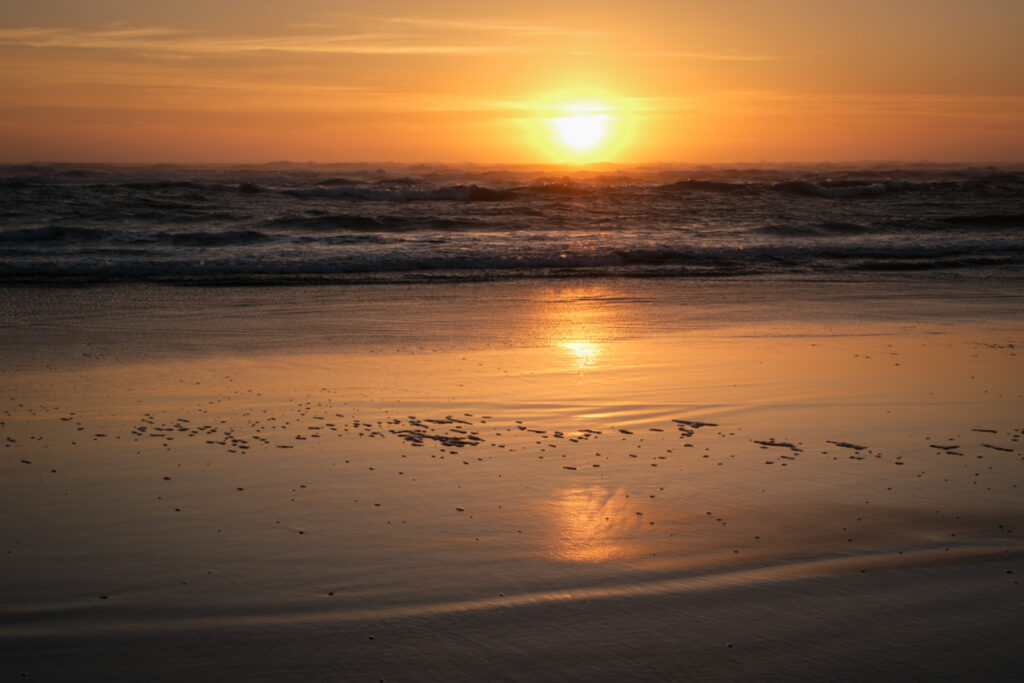
The obvious subject in this photograph is the sunset. I mean, how could it not be the subject. As we were on a long, wide, sandy beach there were a million places where we could have set our tripods down to take a shot of the sunset. For me, as pretty as it is, a basic shot of the sunset with the ocean doesn’t have enough visual interest to make it really worthwhile, so I started looking for little things that could enhance the photograph. The first thing I did was watch the waves and the foam lines that are left on the wet sand when the wave receded. Oftentimes these foam lines or bubbles can provide some visual interest. However, on this beach the waves weren’t big and didn’t leave defined lines of bubbles or anything that was organized in a way that fit with the rest of the image. As I was walking along with a client, I spotted a slight ripple in the sand that I thought we could use as a little thing in the foreground. I saw that it could stretch across the entire frame and most importantly, it had a little shape and flow to it as the sun lit the tops of the ripple and left shadows in the depressions. I felt that the shape, along with a few foam bubbles, would be enough little things in the foreground to make this particular location worth a photograph.
Sometimes the little things are the environmental conditions. I’ll often create a photograph during unique conditions just because I can include some of the little things that might be the visual cherry on top of the subject.
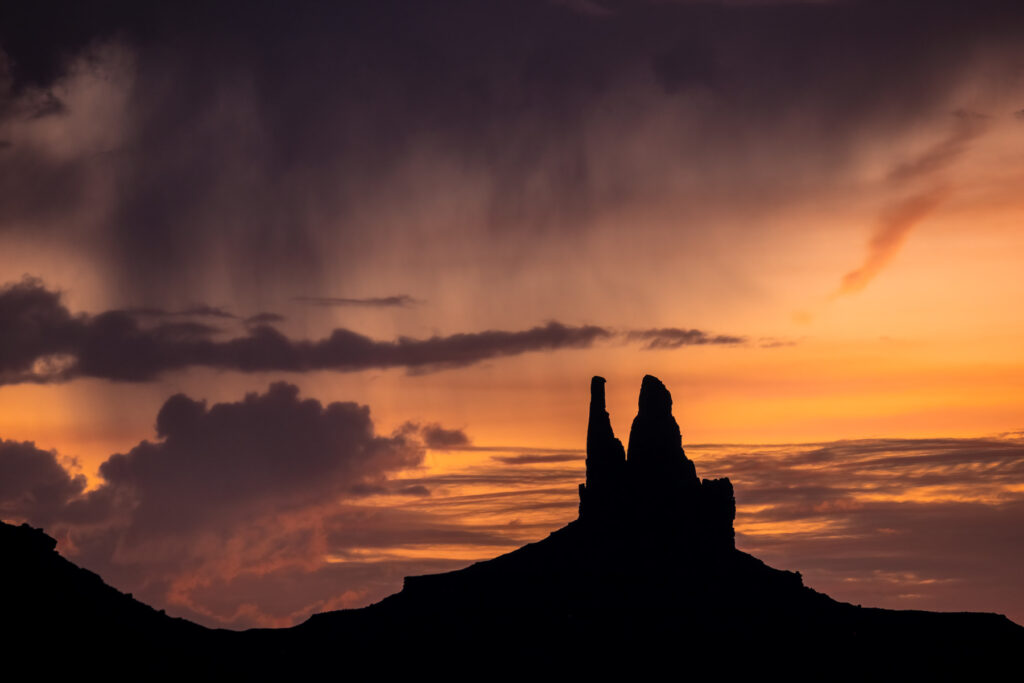
In the above shot, we were in Monument Valley and out for sunrise one morning. A storm had just passed through overnight so we had some amazing skies as the sun started to light the Eastern horizon. Looking East, we had a long line of monoliths to photograph and many of my images included most of them. But as I was standing there, I noticed a bit of raining falling from one particular cloud and thought that could be a little thing that I could include in a tighter photo of the rocks. I switched to a longer lens to zoom in on the area and composed the photo. This image is about the color, sunrise and rocks, but the presence of the rain showers overhead and the clouds behind also imparts a fantastic bit of information about the stormy conditions that were also present. Without the rain falling from the sky, this particular composition is not something I would have shot. There is not enough form or structure or artistic intention to it, but adding the rain in to the mix, the “story” got a lot more interesting and this comp works for me now. And, without zooming in as tight as I did, the rain wouldn’t have been very noticeable or be an important element in the shot.
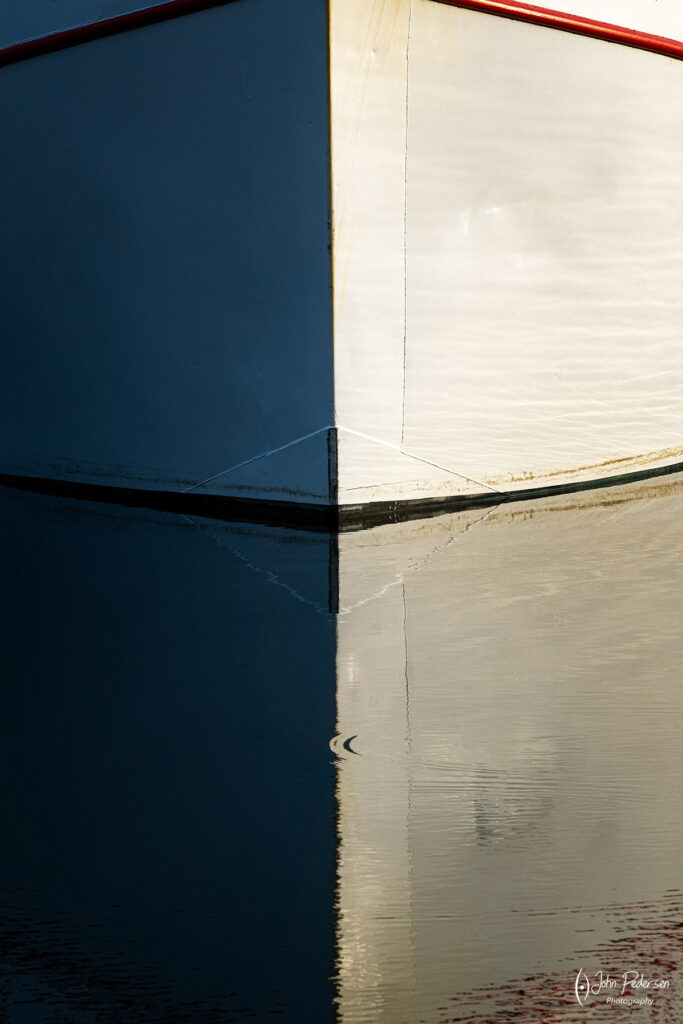
In this image, the little things weren’t planned, but I had presence of mind enough to capture it as I was shooting the image. My intent for this photograph was the balance of dark and light, the symmetry of each side of the boat along with the symmetry of the reflection. Conditions were wonderful in the harbor this morning for capturing reflections and doing this kind of work. As I was refining my composition and taking a few shots, a ripple in the water appeared towards the right of the image. I’m not sure what caused it, but I immediately thought about what might happen when that ripple broke a small bit of the symmetry that I was shooting. So as it crossed the reflection of the bow, I shot a few frames. Since the ripple was small, it wasn’t a huge disruption to the line of the bow, but it is noticeable enough to attract attention. When I got back home, I much preferred this shot to the ones that didn’t have the ripple as it adds just a little bit of visual interest by “breaking” the symmetry that I worked to create.
Sometimes the little things are quite obvious. I was drawn to the patina and texture in the below image of this old tire that has been sitting outside for years and I felt that this could be a wonderful abstract type of image.
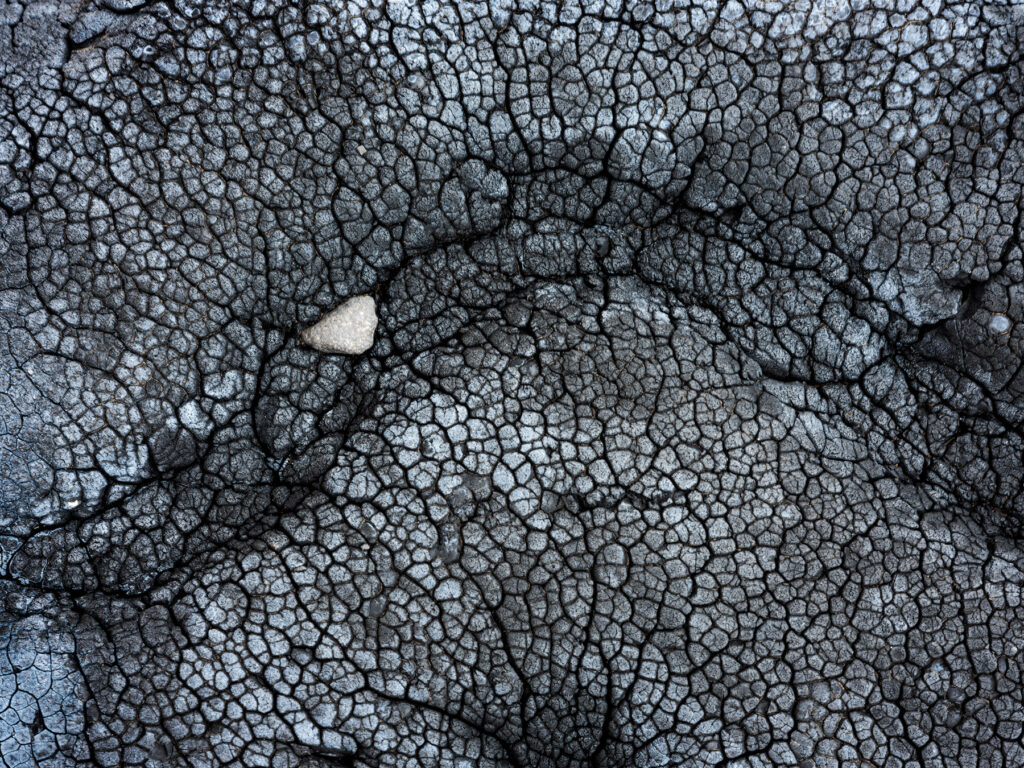
As I studied it, I noticed this one pebble lodged in the faint tread of the tire. I created a few shots not including the pebble, then I turned my attention to this area. In this case, the pebble, acting as the little thing in this photograph, does a few things. It breaks up the pattern in the photograph. It gives viewers a focal point to start their exploration of the photograph, since it’s the brightest part of the image and without an obvious starting point some may be lost. It also gives viewers an anchor point to visually return to as they explore around. And finally, it gives a little bit of context or familiarity to an otherwise completely abstract shot as people can see this is some sort of rock.
The other use for the little things is to help achieve a purpose in a photograph. In the shot below taken in the Palouse area of Eastern Washington, I am shooting from a long distance away at a familiar and obvious subject, the grain silo. One of the reasons we go up on to Steptoe Butte at sunset is to photograph the light and shadows across the landscape as they can be extremely creative and artistic elements in the shots and as you can see the light and shadow on the hills in the foreground really exemplifies this effect.
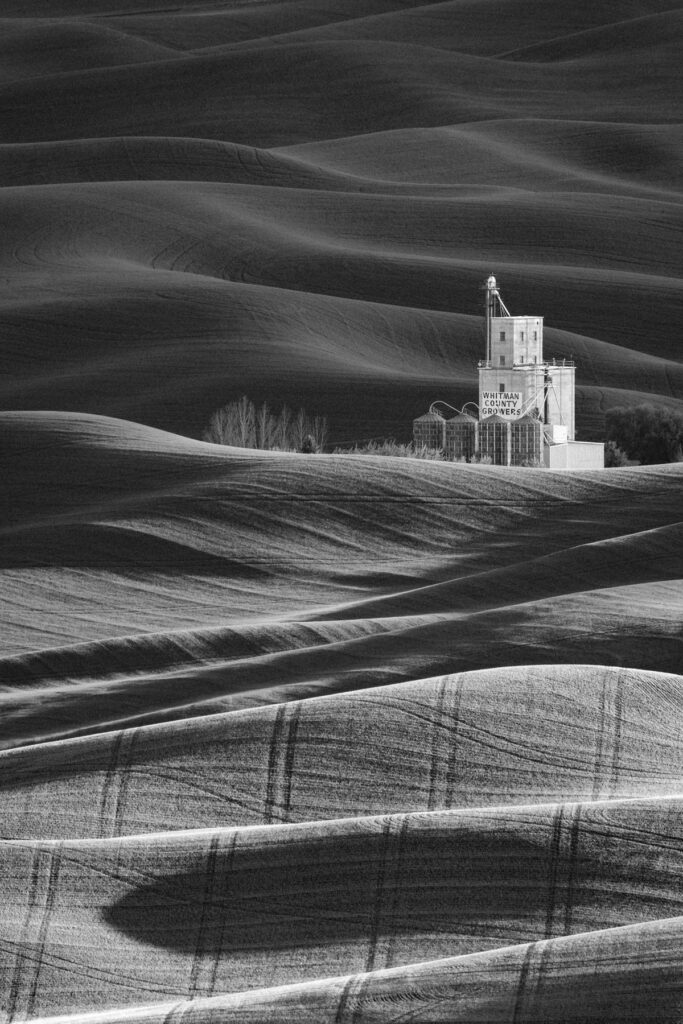
As I look at this photo, to me the main subject is the grain silo. That’s the obvious element. The next important compositional element is the light and shadows in the foreground. These are the subjects. What what are the little things in the photo? It’s the tire tracks in the foreground leading towards the silo. I was very purposeful and thoughtful about including these in the photo as they do a couple of things; 1) act as leading lines directing the viewer towards the silo and b) adding some “story” or “context” to the photo helping to impart the info that this is a farming area and those are tire lines from tractors or some other farm implement. The choice to include these lines being very deliberate, also meant that I was very deliberate about my camera orientation. To include enough of the lines to “make sense” and have the intended effect, I needed to shoot this vertically to include enough of the lines and still have enough background behind the silo.
As I hope you can see from these brief examples, the little things can mean a lot in a photograph! Once I identify my main subject, I spend even more time and attention on finding the little things in the scene and figuring out how to use them in my photographs. The little things can help you…
- Add foreground interest
- Act as an “easter egg” for the discerning viewer to find
- Provide more contextual information to the scene or enhance the story
- Help to bring an emotion or feeling to a photo
Look for curves, lines, textures, patterns or atmospheric elements that you can use as your little thing in the photograph. It’s often quite subtle and you’ll need to slow down and study your location to identify them. Once you do, find a way to work them in to your composition through your positioning of the camera and even choice of lens or orientation of the camera. Learning to “see” the little things around us heightens our own experience being on location plus gives us additional creative elements to use to take our photographs from good to great!


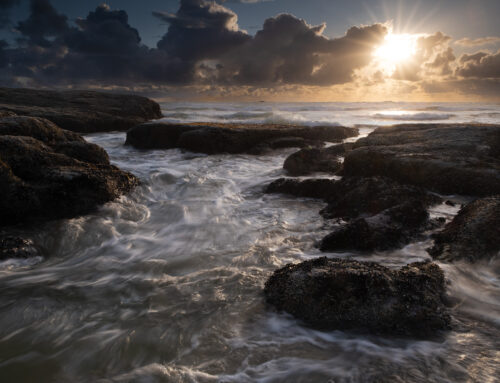
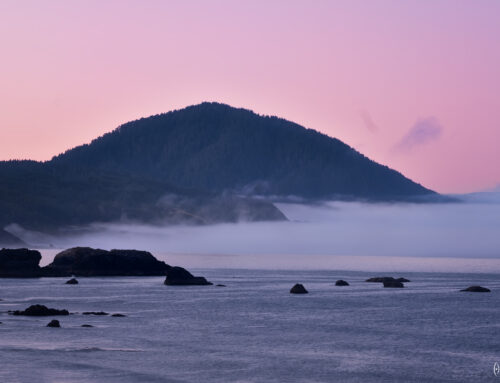
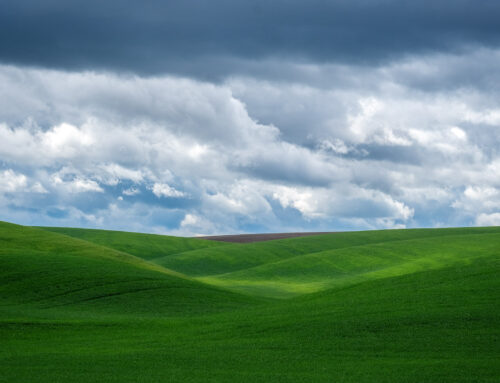
Leave A Comment